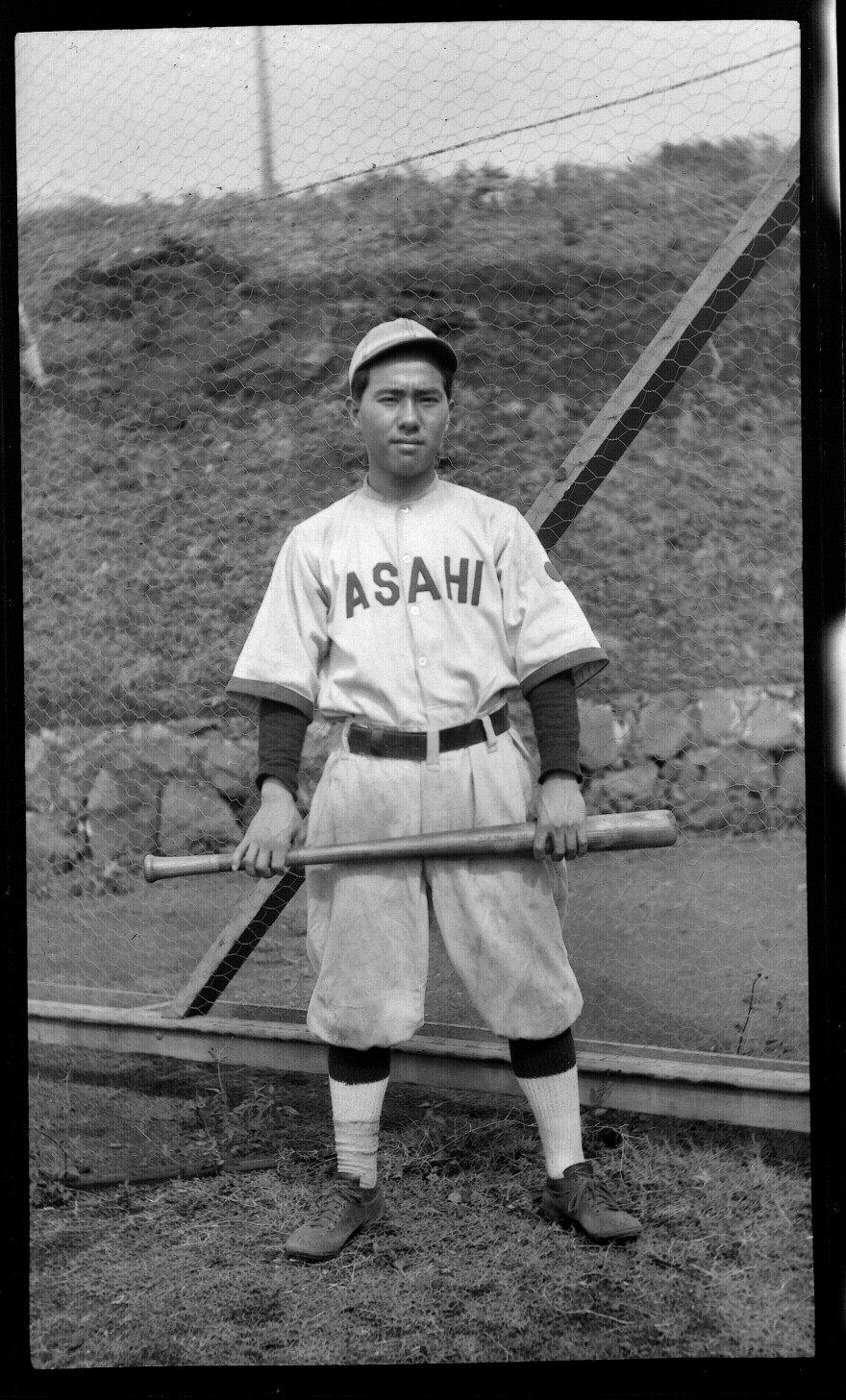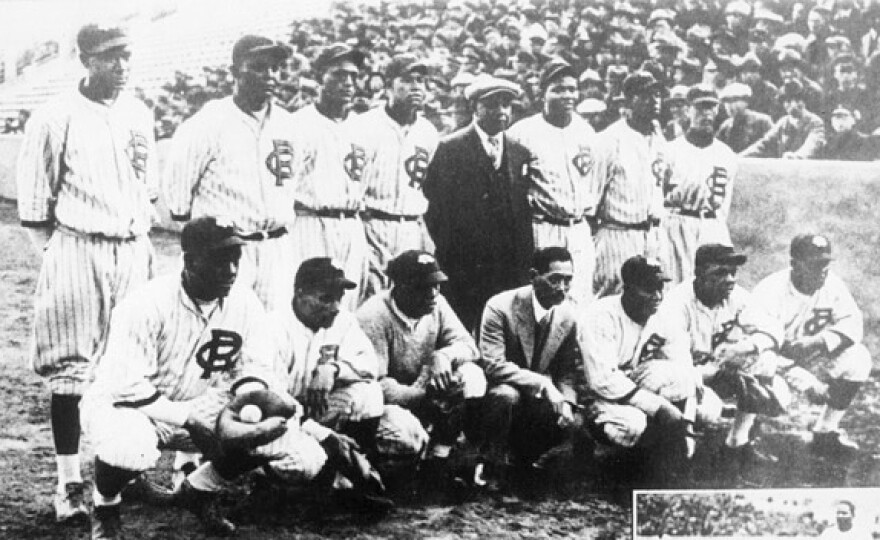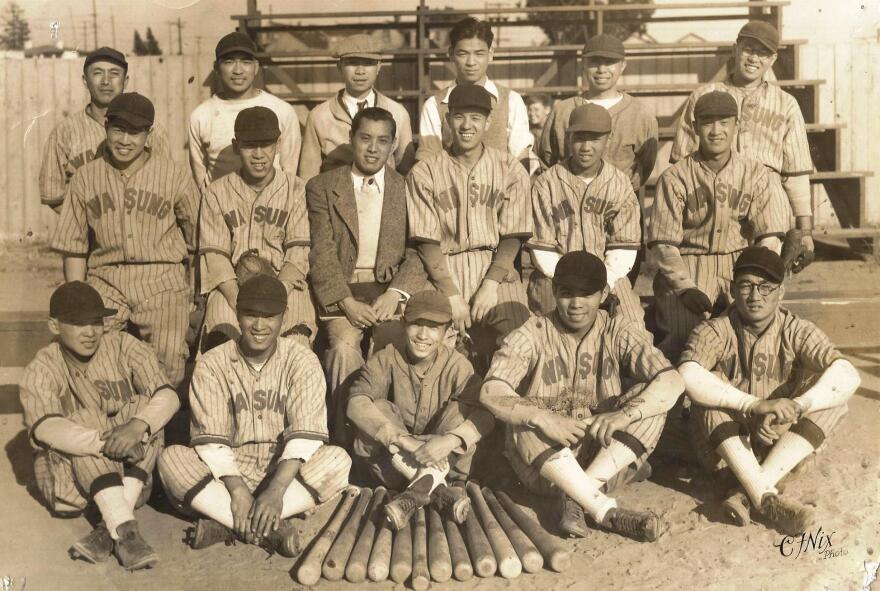In the fall of 1936, a 24-year-old black baseball player from rural Louisiana stepped off a boat in Tokyo. His name was James Bonner. An ace pitcher with a vicious submarine pitch, Bonner, according to Japanese newspapers breathlessly heralding his arrival, once threw 22 strikeouts in a single game back in the States. Bonner had just been signed by a Japanese team called Dai Tokyo, which debuted the year before, lost nearly every game it played, and was desperate for new talent.
Not for another decade would Jackie Robinson be allowed to play an American Major League Baseball game, but in Tokyo, being black wasn't a strike against Bonner. Just the opposite. Local papers excitedly pointed out his color, running headlines like "Black Pitcher Rushes Onto the Scene, Excellent Fielder, Holder of Amazing Strikeout Record." News reports gushed about his personality, calling him "athletic" and "charming." His signing bonus included daily steak dinners, unusual and expensive fare at the time, and his salary at the time was 400 yen per month. That won't get you a hot lunch in Tokyo nowadays, but then, it was an extremely generous salary. The biggest Japanese pitcher at the time, Eiji Sawamura, made about 120 yen a month
But the tale of how a black American baseball player from the Deep South ended up a big shot in Japan in 1936 is bigger than Jimmy Bonner. It's a little-known story of friendship and mutual aid between Japanese-American and black baseball players at a time when both groups were shut out of organized baseball. It sprang up in California in the pre-war years, became part of "one of the boldest — and most overlooked — experiments in baseball history," made its way to Tokyo, and would end up shaping the future of baseball in Japan.
A Place Where 'Only The Game Mattered'
To start, we need to go back to the 1920s, when professional black baseball teams played around the country in a network collectively called the Negro Leagues. One of these teams was the Los Angeles White Sox, managed by a black railroad worker named Lonnie Goodwin who is recognized today as one of the greatest baseball managers of his era. His team was all black, except for one member — a Japanese second baseman — and it played in Central LA's White Sox stadium along with a local Japanese squad called the L.A. Nippons.
The L.A. White Sox had more contact with Japanese-American players in 1925, when they lost a match against a Japanese team called the Fresno Athletic Club. That squad was managed by a Hiroshima-born mechanic named Kenichi Zenimura, whom sports historians would later refer to as the father of Japanese-American baseball. Perhaps over the customary cold beers and cigars he liked to enjoy after a win, Zenimura pitched Goodwin a new venture. Over the previous few years, Zenimura had been rounding up groups of Japanese-American ballplayers to tour Japan to develop the game back home. Might Goodwin be interested in bringing some of his players along for the next tour?

At the time, the sport was still finding its footing in Japan. Baseball had been in the country longer than you might expect, introduced by a white Civil War veteran named Horace Wilson, who taught English at Tokyo University in the 1870s, but it didn't get its native Japanese word — yakyuu, meaning "field ball" — until 1894. The sport developed slowly for the next couple of decades, primarily among students. By the mid-1920s, when Zenimura and Goodwin were making their plans back in the States, Japan's most popular baseball teams were still college teams, and the country had just built its first steel-and-concrete ballpark.
Baseball historian Bill Staples has written a biography of Zenimura, and he estimates that for both Zenimura and Goodwin, the prospect of touring Japan was a timely opportunity. Zenimura knew that baseball was slowly gaining popularity in his home country and that the pair stood to make good money on ticket sales at exhibition games at universities and parks in Japan. This was especially important for Goodwin; making a living as a semipro ballplayer was difficult for blacks, meaning that funds for stadiums, uniforms and player salaries had to be secured through creative means. This seemed like a good shot.
Zenimura and Goodwin may have had ticket revenues in mind, but if you take a step back, the stakes were bigger than baseball or business. Anti-Asian racism was rampant across the country, and by 1920, a California organization called the Japanese Exclusion League was gaining influence. With the backing of powerful newspapers, the group successfully lobbied for the Immigration Act of 1924, effectively banning Japanese immigration to the U.S. For some Japanese-Americans, baseball was a way to negotiate their Americanness on their own terms. As Takeo Suo, who played ball as a prisoner in a wartime internment camp, would later put it, "putting on a baseball uniform was like putting on an American flag." For Zenimura, who saw baseball as a way to break down barriers, expanding the sport in Japan may have been a way to ease tensions at home as well.
A Glowing Welcome
In the spring of 1927, Goodwin and Zenimura arrived in Japan for a joint "goodwill tour." Zenimura brought his own Japanese-American team, and Goodwin led a powerhouse squad of 14 all-star Negro League players he had sourced from other cities and dubbed the Royal Giants. One Japanese player recalled arriving at a match against the Giants and watching in a mix of fear and awe as his far more experienced opponents warmed up on the other side of the field. Surely, this squad of foreigners was going to crush his team. But, as he reported years later, "We were extremely pleased to find that they did not take an overbearing attitude, but instead were quite gentlemanly. Unlike our games with the Major League players, we had an excellent match, and this heightened our love for the game of baseball itself."

(Those other games he's referring to were in 1934, when a group of white major league superstars, including Babe Ruth and Lou Gehrig, went to Japan for another "goodwill" tour. Japanese baseball historian Kazuo Sayama reports that the experience left their hosts with a bad impression. "The white players ... treated their opponents and the fans with contempt, running up scores against inexperienced opponents and insulting their hosts, both on the field and off," he writes. "On one rainy day, Ruth played first base holding a parasol. Gehrig wore rubber boots. Al Simmons lay down in the outfield grass while a game was in progress.")
Other accounts of the 1927 black Royal Giants goodwill tour are similarly glowing. They could have easily overpowered most of their opponents but refrained from running up the score. When a missed call from an umpire resulted in the single loss of their otherwise undefeated 24-game tour, the Giants accepted the results with a smile. Even an accidental beanball was met with a friendly bow. And for the Negro Leaguers in Japan, their kindness was met with more kindness, as a 2008 article at MLB.com about the 1927 Goodwill Tour recalls:
"The emperor of Japan presented a [trophy] cup to Negro Leaguer and Royal Giant Rap Dixon, quite a step up from life in a country where blacks were treated as second-class citizens."
"When they got over to Japan and Tokyo, they felt a sense of freedom," said Ray Mackey, the grandnephew of Biz Mackey (a famous Negro League catcher). "The Japanese people met them more or less with open arms and subsequently caused them to respond in a like manner."
Did the fondly remembered Royal Giants goodwill tour — and the negative experience of the Major League Baseball tour just a few years later — lay the foundation for Japanese interest in a man like Jimmy Bonner, the ace pitcher recruited by Dai Tokyo in 1936? It's hard to say for sure, but if he'd heard anything about the treatment of his predecessors, Japan surely would have sounded like a great opportunity for him.
But how did a Tokyo team find out about him in the first place? A clue may lie in the liberal, multicultural climate of baseball culture in 1930s Northern California, which was giving rise to "one of the boldest — and most overlooked — experiments in baseball history."
No Reason They Shouldn't Coexist
That experiment was called the Berkeley International League, a Bay Area baseball league founded by black radio host, wire journalist, car race emcee and all-around entertainment mogul Bryon "Speed" Reilly. As the San Francisco Weekly recounts, Reilly brought together a whole host of hardscrabble semipro and sandlot teams from around the Bay Area who were shut out of all-white organized baseball. His league had not only black teams but also Latino, Japanese and Chinese, with names to match — the Aztec Stars, the Fuji Club, the Wa Sung Athletic Club.
These teams shared stadiums and practice grounds and — crucially — competed against each other. This was unlike anywhere else in the country at the time. Even when minority teams were permitted to use playing grounds in other parts of the country, they almost always played along racial lines — black teams playing only other black teams, Chinese squads scheduling games against other Chinese. But as SF Weekly's Ryan Whirty explains, the various ethnic communities that came together for the Berkeley International League "really saw no reason why they couldn't and shouldn't co-exist."

The audiences for these games were also remarkably mixed, and regularly broke 1,000 — massive numbers for a semipro match at the time. In particular, Japanese-American teams seem to have been an important part of Bay Area baseball culture. Local historian and baseball researcher Ralph Pearce, who has been on Bonner's trail for nearly two decades, writes in his book From Asahi to Zebras that as early as the 1920s, teams like the San Jose Asahi received enthusiastic newspaper coverage and had a strong following, including many white fans.
To be sure, West Coast baseball wasn't some utopia of racial harmony. The legendary Pacific Coast League, for example, enacted a "color line" policy that forbade its teams to play black teams, or black teams to use its parks. But when discrimination stood in the way, there are notable instances of black players leaning on Japanese communities for help. For example, most people who are familiar with baseball history have heard of Rube Foster, the founder of the National Negro League. Five years before he founded the league, Foster was touring Oregon with a black team and, as often happened to traveling black entertainers and athletes at the time, he struggled to find a single hotel, or even a restaurant, that would serve his team. But as the Chicago Defender reported on April 11, 1914, they eventually found a Japanese restaurant where no "color line" existed. There, they were finally able to eat breakfast.
So given what minority players faced in nearly nearly every other league in the country, the Berkeley International League was a truly remarkable institution in its time. "Reilly and his comrades openly defied the social mores of segregation that still dominated even the progressive Bay Area," writes Whirty, "and prompted residents, players, and fans of different cultures to learn about each other, as athletes and as people."
And it brought together people who would almost certainly never have met outside the ballpark, setting off unlikely domino effects. After all, it was while playing for a Berkeley International League team that Bonner, who had moved to California from Louisiana in the early '30s, was scouted by a Japanese-American baseball fanatic who put him in touch with his soon-to-be team in Japan.
Playing Ball, On Their Own Terms
So why have most baseball geeks — including dedicated historians — never heard of James Bonner, a black star player in Japan a whole decade before Jackie Robinson broke American baseball's color line? After all, newspapers of the day seemed excited about his arrival. He played a couple of unofficial matches soon after arriving, and things were looking good. His submarine pitch was hot, and one catcher remarked that he doubted that anyone would be able to hit it.
But as it turns out, Bonner never quite lived up to the hype. Once the season started, Bonner lost control of his pitches, walking 14 batters over the space of four games. In his third game, he made a fielding error that cost his team the match. His batting average of .458 was stellar, but he'd been hired to pitch, not hit. News reports went from glowing to confused to dismissive. After only a month, he was taken off the roster and sent back to America. Very little is known about his later years, including whether he continued playing baseball.

But while Bonner's career in Tokyo was short-lived, the impact of the institutions that helped get him there, from the black-led Goodwill Tours to the racially progressive Berkeley International League, continued to roll on. The cover of the May 1927 issue of Yakyuu Kai (Baseball World) featured a player named Shinji Hamazaki shaking hands with a member of the Royal Giants after a game at Keio University. Hamazaki would later go on to manage the Hankyuu Braves, and once foreign players became eligible to play in the Japanese leagues, he immediately recruited two black players — the first to play since Bonner. Scholar Kyoko Yoshida reports that when the president of the team expressed reservations about hiring these new recruits, Hamazaki stood by them, saying stubbornly: "If you don't want black players, then you don't want me."
Baseball historian Staples says there's no doubt that black and Japanese American baseballers helped shape the foundation of Japan's baseball culture. As he points out, Japanese-American managers and players served not only as a bridge between the U.S. and Japan but between communities within the U.S. as well. And for their part, black players worked respectfully with their Japanese counterparts, encouraging them to develop the game in their home country. One historian even suggests that the Japanese style of baseball is closer to the old Negro Leagues style, emphasizing "teamwork, finesse pitching, and the sacrifice bunt" over the more individualistic style of MLB.
As the two countries headed toward war in the late 1930s, baseball relations were cut off. The game turned inward — U.S. games continued as an expression of American wartime patriotism, and Japan's Baseball World magazine briefly shifted to include coverage of sumo wrestling. But as soon as the war ended, it was again a Japanese-American who bridged the two cultures through baseball. Immediately after the American occupation of Japan began, the U.S. government recruited Tsuneo "Cappy" Harada, a former semipro player from California, to help rebuild Japan's baseball spirit.
And soon enough, Japanese and black baseballers were once again interacting on their own terms. When I mentioned the story of the Royal Giants to my uncle, who's also black and spent part of his childhood on a Tokyo-area military base in the 1960s, he told me that his first baseball idol was a Japanese slugger named Sadaharu Oh, known as the "Home Run King" to my uncle and his mixed band of Japanese and American friends. They played ball around the base and every time my uncle went to bat, he'd copy the "flamingo" leg stance he'd seen Oh do at the big game. He'd lift his left foot high off the ground as the pitcher wound up, and as the ball came close, step-whack! He'd plant his foot forward and swing, laying into it just like his Japanese hero.
Dexter Thomas is a scholar of modern culture. He studies and teaches at Cornell University and is currently writing a book on Japanese hip-hop culture.
Copyright 2021 NPR. To see more, visit https://www.npr.org. 9(MDAxMTMyMDY2MDEyNDUxNzAyNjlmODI5NQ004))


